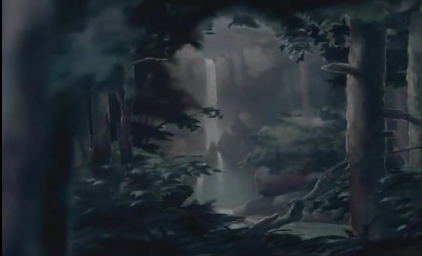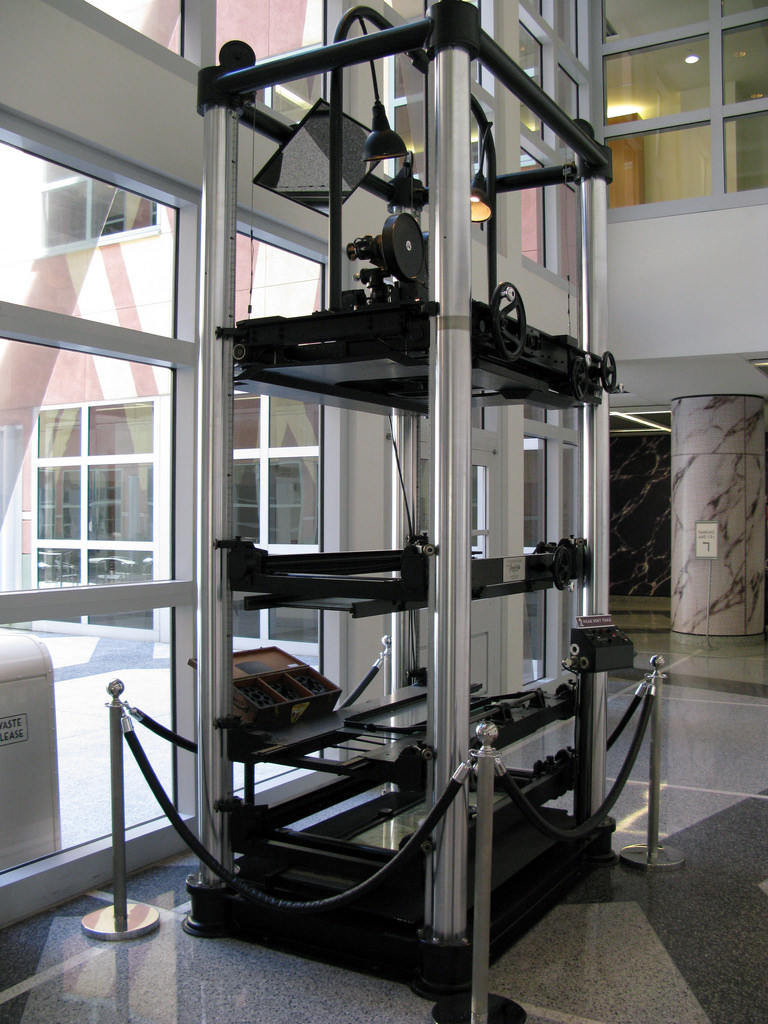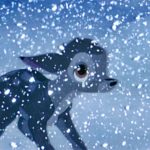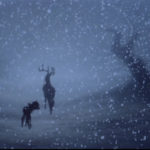
BAMBI (1942, Disney, et al.)
Today’s shot marks the first inclusion of an animated film. This one from the earlier days of Walt Disney. I tell you, these early films of his are brilliant. (By way of comparison, i feel this era of the 30s/40s was to Disney what the 70’s & early 80’s were to Spielberg.) You could never make them today, what with their ambiguity and occasional darkness. Poetic meditations, with a taste of Walt’s whimsy (instead of a smothering), that aren’t afraid of the shadows. (How about the visually-arresting scene in the dense snow fall, when Bambi is confronted with being alone?)
Walt Disney, director?
To my surprise, naming the ‘director’ of this film is complicated because there are so many credited – none of which are Walt Disney! That really blew my mind. While each sequence’s director received a credit (at least on imdb), no one can deny that Walt, like David O. Selznick, was the author of his passion projects.
I recently got to watch this film on blu-ray, by way of high-def projection. It looked magnificent. The opening shot jumped out immediately as something to post about. It’s bold; it introduces us beautifully to setting, theme, and tone; and it’s ground-breaking for its time (see the featurette in second youtube player below).
The films of this period at Disney mark a breakthrough in animated camera work with the invention of the multi-plane camera, but I feel this film utilizes it best. (Other films included Snow White, Fantasia, Pinocchio, and a short called The Old Mill.) Depth is everything in photography and the opening shot of Bambi is a wonderful example of the charming, amazing depth this system created, and, boy, does this shot go on and on. (Can you imagine how long the background paintings must have been?) This shot surely was awe-inspriring for movie-goers back in 1942, like nothing they’d seen before, even in the other Disney movies.
The opening credits end and the shot begins at 1:20:
.
Here is the piece on the multi-plane camera, or as Walt referred to it, a “super-cartoon camera.” It even shows the elements used for today’s shot. Apparently it was a miserable experience to animate on this thing – there were so many lightbulbs and the thing had to be housed in a small room to keep light pollution out, so it was swelteringly hot in addition to being labor intensive to operate. According to Walt’s biography, one multi-plane shot for Pinnocchio cost $50,000 – in 1940.
.
I snapped a pic on a recent visit to the Disney Studios, where the multilane camera is on display in the lobby. (Ironically, the art displayed on the set up is what I consider to be the sloppiest shot in all of an otherwise perfect film, Pinocchio, but more on that soon.)



R Poe
Amazing depth. Thanks for the explanation of the multiplane camera camera, too, which was a brilliant design that revolutionized animation. I first noticed this technique in the opening credits of Jonny Quest as they pan down the river.
Here, though, it is almost seamless – better than a lot of the cgi out there at the moment. Certainly better than 90% of the animation that’s out there. Disney’s acquisition of Pixar was the smartest move they’ve made in the last 50 years, since their creative banks seemed to be nearly depleted after Walt died. (They did have a decent run in the eighties with stories like Little Mermaid and Alladin, but god, that stuff was devoid of meaningful content or artistic merit.)
It’s taken Pixar to give Disney a bit of street-cred in the 21st century, even though they turned those guys down thirty years earlier. http://youtu.be/hUuwOl8CZw4
jsbfilm
I totally agree about the reinvigoration of Disney through Pixar. Not since the past TOY STORY movies has their been any honest darkness to make the journeys actually resonate. (Like when Woody & gang were headed toward their fiery deaths in TS3, or how existentially angsty TS2 was!)
I see THE PIXAR STORY streams on Netflix. Thanks for the reminder – shall watch post haste!
R Poe
The Pixar Story is a good lesson about sticking to your guns when you know you’re on to something. We all want to make a living, but keeping innovation at the core of your art will be the really big pay off in the end….(or at least so I’d like to believe).
johnef
I guess those white gloves weren’t invented yet….Did the filmmakers leave all of their fingerprints on the cells and plates?
dave c
I love what i learn here!
THANKS
jsbfilm
Sure thing, Dave!
Eric Johnson
Have you ever seen the multi-plane camera scaffolding(?). I’m not sure what they call it, but it was (and may still be) on display in the lobby of the FGW building on the Disney lot. If you ever have a meeting on the lot, you should find a way to sneak into the FGW lobby/archives, before you head back to your car. It’s really amazing.
jsbfilm
Oh, that’s right, you were at Disney, too. No, I’ve not seen it. But my pal Joe who used to work in casting over there is taking me soon to see it. he suggested the same thing! (When I get there you sure I won’t think it’s a s.h.?)
Carlos
I believe the last time they used this technique was the opening sequence of “beauty and the beast”. As a kid I was always amazed how g theory did this type of shot. Though I never understood it. Then one day it clicked, and I attempted it with a video camera two windows (from screen doors) and some cut outs I had made. Well, it was slot harder than I thought. Failed big time.
As far as Bambi goes, I never liked it when Godzillas foot steps on him…her? I thought it was out of place.
Good job Kimo!
jsbfilm
Good one, re Godzilla, amigo! What’s g theory? Is that a typo or a rapper?
Carlos
its a typo…and from the looks of it…many typos. That’s what happens when I use my phone to reply to these posts.
jsbfilm
Gotcha! G theory must be phone-typing for “they.”